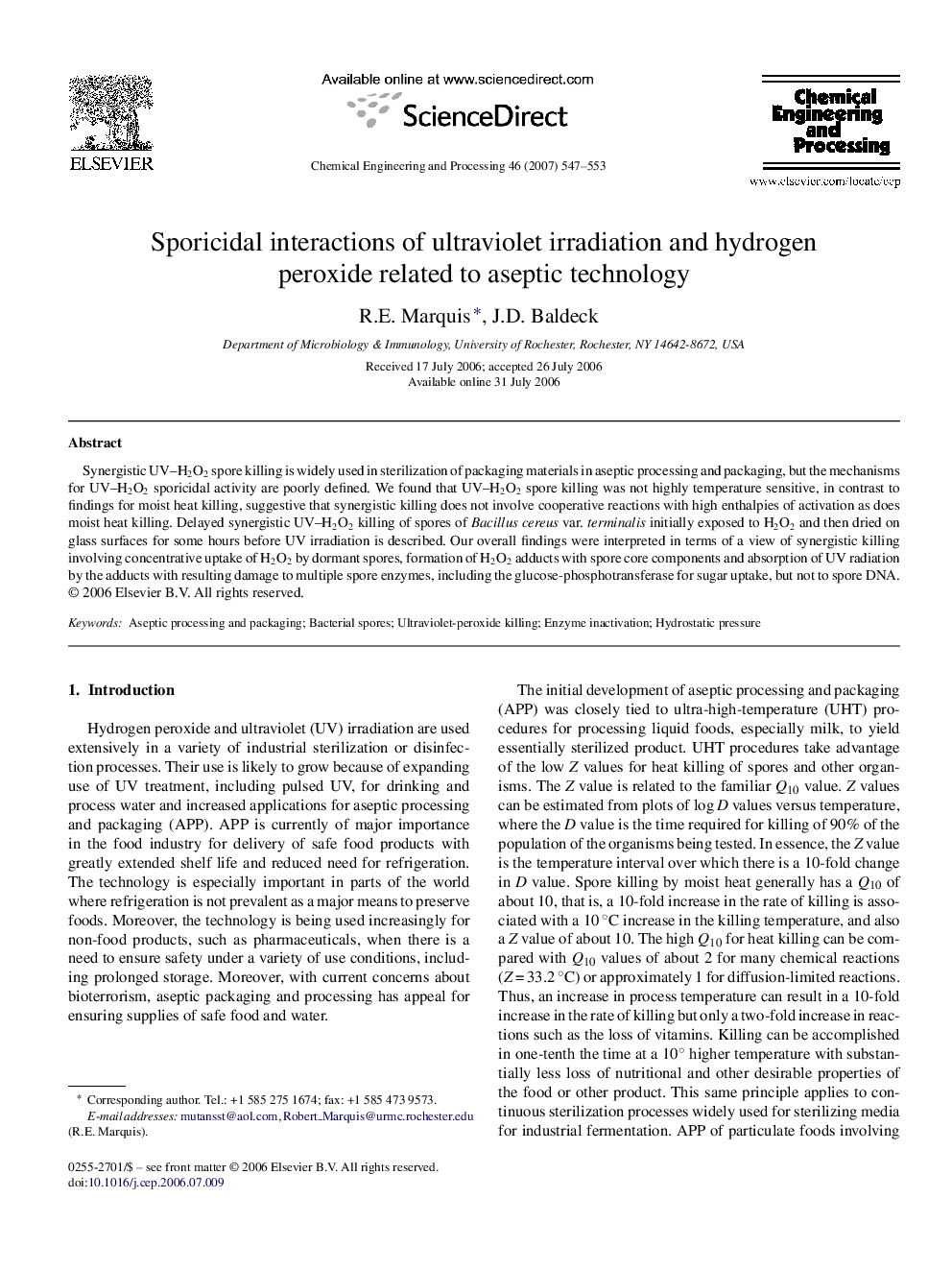| کد مقاله | کد نشریه | سال انتشار | مقاله انگلیسی | نسخه تمام متن |
|---|---|---|---|---|
| 687776 | 889353 | 2007 | 7 صفحه PDF | دانلود رایگان |

Synergistic UV–H2O2 spore killing is widely used in sterilization of packaging materials in aseptic processing and packaging, but the mechanisms for UV–H2O2 sporicidal activity are poorly defined. We found that UV–H2O2 spore killing was not highly temperature sensitive, in contrast to findings for moist heat killing, suggestive that synergistic killing does not involve cooperative reactions with high enthalpies of activation as does moist heat killing. Delayed synergistic UV–H2O2 killing of spores of Bacillus cereus var. terminalis initially exposed to H2O2 and then dried on glass surfaces for some hours before UV irradiation is described. Our overall findings were interpreted in terms of a view of synergistic killing involving concentrative uptake of H2O2 by dormant spores, formation of H2O2 adducts with spore core components and absorption of UV radiation by the adducts with resulting damage to multiple spore enzymes, including the glucose-phosphotransferase for sugar uptake, but not to spore DNA.
Journal: Chemical Engineering and Processing: Process Intensification - Volume 46, Issue 6, June 2007, Pages 547–553